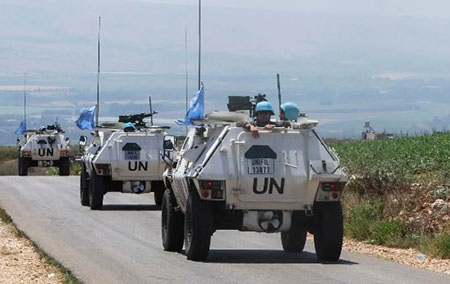Special to WorldTribune.com
 By John J. Metzler, September 8, 2023
By John J. Metzler, September 8, 2023
It’s been two years since the fall of Afghanistan.
The tragic collapse of Kabul to the Islamic fundamentalist Taliban signaled the last sordid chapter in the Biden Administration’s appalling and shambolic “withdrawal” from America’s longest military commitment. But beyond the perceived American weakness and strategic myopia it glaringly manifest, the Afghan debacle incentivized what political scientists dub as “bad actors” such as Russia and Communist China.
Thus, though the deadly Afghan war “was finally over” humanitarian tragedies continue to befall the beleaguered South Asian land. Yet widening the screen to the state of grand geopolitics, Vladimir Putin’s Russia turned up the heat on the long simmering war in Ukraine and Xi Jinping’s hyper-aggressive China would probe and prod the sovereignty of democratic Taiwan. Equally, Kim Jong-Un’s North Korean regime continued to provocatively test-fire over 100 ballistic missiles during these past two years.

Such becomes the grist for bigger or impending conflicts. Russia brashly invaded Ukraine in February 2022, expecting a quick victory, only to be bogged down in a bloody slugfest which is far from over and threatens to dangerously expand.
Still most people are not aware of at least a dozen other lower-level conflicts worldwide; Some have smoldered for decades, others are more recent, but all combine that tragic quality of endless fighting, economic destabilization and ensuing refugee flows.
The permanence of geography, of ethnic and religious fault lines separating and dividing people sometimes in the same country (think Bosnia), or conflicts stemming from the often arbitrary colonial lines drawn on a map, primarily in Africa, creates the conditions for conflict.
In many places around the world from the forever missions in the Democratic Republic of the Congo, in Lebanon, divided Cyprus, or the Indo/Pakistan line of control, UN Peacekeeping forces have maintained a status quo; they stopped the clock on the fighting and continue to “monitor and patrol.” In other deployments such as the interminable conflict in Sudan’s tragic Darfur region, their mission largely stopped the genocide a decade ago.
The oldest operation UNTSO, established in May 1948, was the first ever peacekeeping operation established and based in Jerusalem, and monitors ceasefires and armistice agreements. Equally UNMOGIP along the disputed Jammu/Kashmir frontier was set up in 1949, two years after the partition of the British Raj into independent India and Pakistan.
The United Nations maintains 12 peacekeeping missions globally with approximately 90,000 military forces, often dubbed the blue helmets. UN forces are tasked to keep warring parties apart, ensure delivery of humanitarian supplies, but not to engage in offensive combat.
Peacekeeping missions are defined by an alphabet-soup of mission names such as UNIFIL the United Nations Interim Force in Lebanon which though Interim, was actually set up in 1978. Or the more recent MONUSCO the United Nations Organization Mission in Democratic Republic of the Congo (former Zaire) staffed by 17,700 troops and police. Nonetheless the varied Congo missions have been stationed in this tragic land since the 1960’s! Despite the UN presence internecine violence and humanitarian crises have plagued in the vast country; since 1998, over five million people have died as a result.
In other African crises such as Somalia, the UN closed its mission and is now phasing out its Mission in Mali. Other operations such as South Sudan with 18,000 forces or the United Nations Multidimensional Integrated Stabilization Mission in the Central African Republic (only a bureaucrat could create this) with 18,500 forces have been reinforced.
Peacekeeping is hardly a panacea to entrenched political and ethnic problems but nonetheless stops the clock or freezes the conflict as we saw during the Balkan wars or Cyprus.
Missions must be formally established by the fifteen-member UN Security Council. Currently the 75th anniversary of Peacekeeping is being commemorated; Since 1948 more than 2 million people have served in 71 far-flung missions.
Beyond these deployed missions there are a number of simmering or long running conflicts such as Syria, Yemen, Libya, Somalia and Sudan which beg for political solution. What of ethnic conflicts in Burma/Myanmar or Ethiopia?
Potential mega-conflicts such as China/India, India/Pakistan, USA/China lurk in the geopolitical mists.
There’s a historical lesson here too. World peace, which was dubbed Pax Romana, lasted for 200 years due to the Sword, the Shield and usually competent Caesars, ended when Rome’s power and political writ crumbled into political chaos and corruption. So too did the world as people knew it. Today’s global chaos and lacking leadership holds a dire warning.
John J. Metzler is a United Nations correspondent covering diplomatic and defense issues. He is the author of Divided Dynamism the Diplomacy of Separated Nations: Germany, Korea, China (2014). [See pre-2011 Archives]
